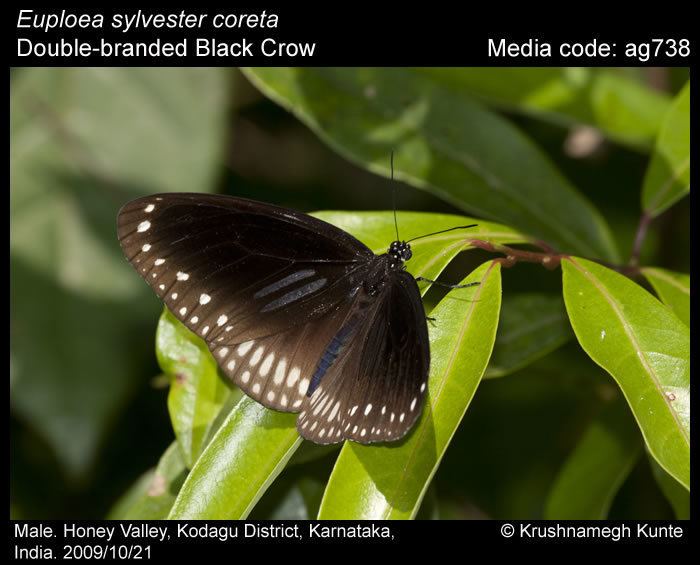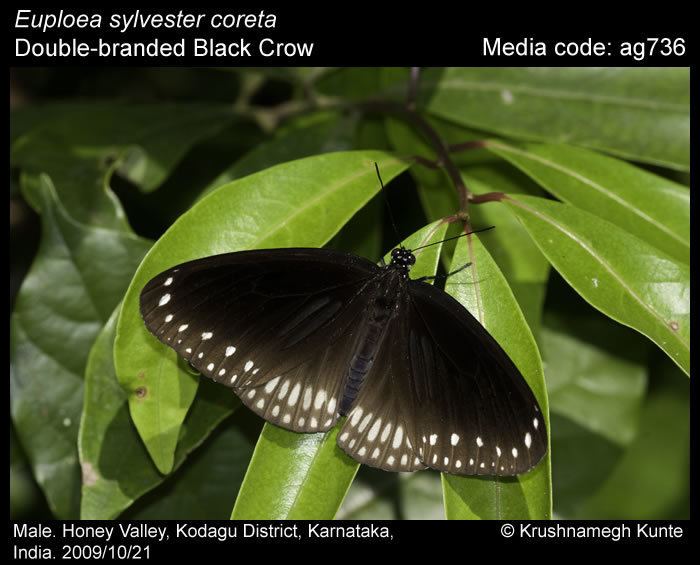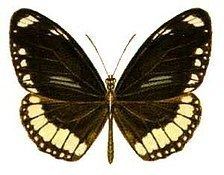Genus Euploea Rank Subspecies | ||
 | ||
Similar Euploea tulliolus, Euploea eunice, Euploea, Euploea mulciber, Tirumala septentrionis | ||
Two brand crow euploea sylvester
Euploea sylvester, the double-branded crow, also known as the two-brand crow in Australia, is a butterfly found in South Asia, Southeast Asia and parts of Australia that belongs to the crows and tigers, that is, the danaid group of the brush-footed butterflies family.
Contents

Several races of the butterfly are recognized. Race pelor is found in Australia.
Two brand crow euploea sylvester
Description

In shape, colour, and markings, it very closely resembles Euploea core. Males, however, can be distinguished at once by the presence of two brands instead of a single one on the forewing. Of the females Lionel de Nicéville says, females of E. coreta can be separated from the females of E. core by the following points: "First by the outline of the forewing being more entire; in core it is slightly but perceptibly scalloped- Second, by the underside of the forewing having a complete series of six spots, one between each pair of nervules outside the cell; in core two of these spots, those above the discoidal nervules (veins 5 and 6), are always wanting. Third, the two brands on the interno-median area (interspace 1) of the forewing in the male are faintly but quite perceptibly to be traced in the female in the same position."
Larval food plants

The double-banded crow feeds on plants of the families Apocynaceae (dogbanes and oleanders), Asclepiadaceae (milkweeds) and Moraceae (figs) and the specific species are Ficus obliqua, Ficus microcarpa, Ficus racemosa, Gymnema sylvestre and Ichnocarpus frutescens
